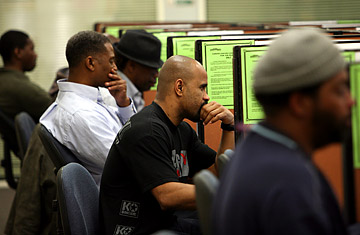
Unemployed and need to learn new skills to get hired again, but can’tafford the tuition to go back to school? Help may be on the way. Democratic Senator Bob Casey of Pennsylvania is pushing for a new law that aims to pay community colleges nationwide $1,000 per student to retrain laid-off workers. Casey’s bill would set up the Unemployment Tuition Assistance Program as part of the Department of Labor (DOL). People filing for unemployment benefits would be notified that tuition assistance may be available to them, and colleges that volunteer to participate would register with DOL for reimbursement, which Casey says would come from existing funds already allocated to job retraining in the department’s budget.
His inspiration for the bill: Pennsylvania’s community colleges,10 of which have enrolled 1,062 unemployed workers in free trainingprograms this semester, at a total cost to the schools of $741,788. “Theyshouldn’t have to foot the bill alone,” Casey says. “My bill will encourageother community colleges across the U.S. to do the same thing.” SenateDemocrats are working to build bipartisan support for the bill and expectto move it forward in the coming months. (See TIME’s special report on paying for college.)
A few states already have a head start. California, whose 11.2%March unemployment rate is the state’s highest since 1941, is rushing tofunnel $415 million in federal stimulus money to 49 job-retraining centers.Most of the training will be designed to qualify people for jobs ininfrastructure construction, health care and green industries like wasterecycling and wind-farm technology. In Texas, legislators will vote nextmonth on a final version of a 2010-11 budget, already passed by the statesenate, that boosts spending on higher education by $1.5 billion. Thatfigure includes $500 million in federal stimulus funding for workforceretraining and a $134 million state-funded increase in financial aid forstudents.
Michigan, whose 12.6% jobless rate is the highest in the U.S.,with still more auto-plant closings coming soon, launched its “No WorkerLeft Behind” program in August 2007. So far the state has footed the bill— up to $10,000 per displaced worker — for 61,434 unemployed Michiganders tolearn the math, technology and science skills they need to embark on newcareers at companies like Hemlock Semiconductor, Dow Chemical and DowCorning, which are investing and hiring there. Also in demand: the program’snewly trained nursing assistants, physical therapists and health-caretechnicians.
And then there’s Georgia. Enrollment at the state’s 33 technicalcolleges has jumped 10% over this time last year, with the biggest growth(12%) in students ages 21 to 35 and an 8% spike in students over age 36.Many of those folks are workers displaced by the recession, whose tuition isbeing paid by a statewide program called HOPE (for Helping OutstandingPupils Educationally) and who are drawing unemployment benefits to pay thebills while they attend school.
One of those students is Scott Harlin, 40, whose job as a drug- and alcohol-rehabilitation counselor was wiped out by state budget cuts two years ago.He’s now studying at Columbus Technical College, in Columbus, Ga., to becomea Cisco certified network engineer. Says Harlin (whose grade point average thus far is 4.0): “Jobs are so hard to come by right now. Why not study and get qualified to do something that will be marketable later?” He adds, “I’vealways thought about going back to school, but I probably wouldn’t have doneit if I hadn’t gotten laid off. This is the silver lining to a pretty uglycloud.”
The silver lining for Georgia taxpayers? HOPE doesn’t cost them adime. The program, which has shelled out $4.4 billion in tuition money sinceits inception in 1994, is entirely funded by the Georgia State Lottery.